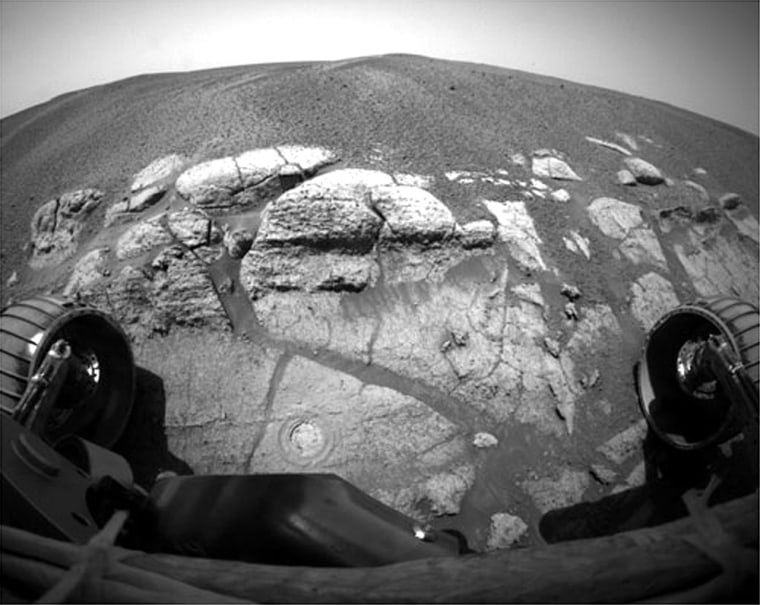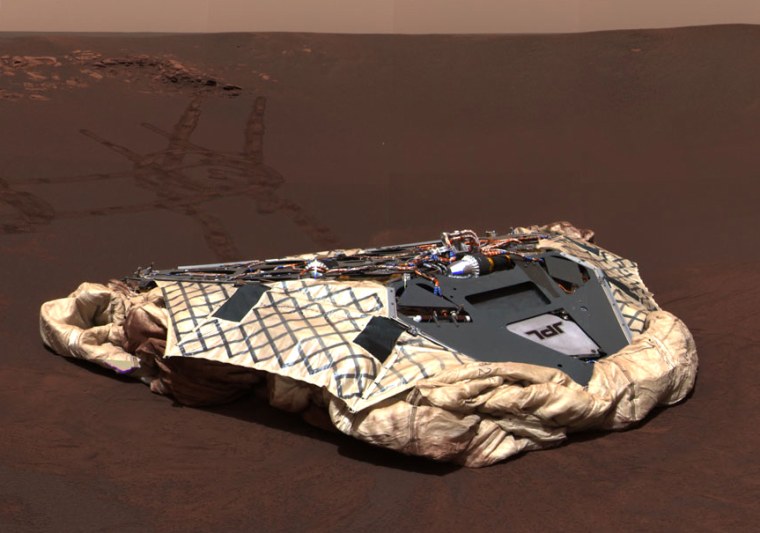NASA’s two robotic rovers on Mars have begun scaling back their working hours as the approach of autumn on the Red Planet and dust on their solar panels slowly chokes off their power supplies, a NASA official said Friday.
The rovers Spirit and Opportunity, which landed on the Red Planet three weeks apart in January, are engaged in intensive searches for signs of water on opposite sides of Mars.
Evidence of rocks or soil that formed in water would help validate scientists’ theories that for the first half of its 4.6-billion-year existence, Mars had plentiful surface water and possibly life.
The rovers’ solar-powered batteries were designed to power their suite of onboard instruments and computer, antennas and locomotion systems for at least 90 days.
The batteries put out about 900 watt-hours per day when the vehicles landed, but that output drops about 100 watt-hours every 50 days, Richard Cook, project manager at NASA’s Jet Propulsion Laboratory, told reporters during a Friday briefing.
But accumulating dust and shorter periods of sunlight have taken their toll, leaving scientists and engineers at JPL in Pasadena, Calif., with about 650 watt-hours to work with on Spirit, now in its 54th Martian day, or sol. Each sol lasts 24 hours and 37 minutes.
“The vehicle is continuing to perform fine, but we are starting to modify our daily process to respond to the decreasing power,” Cook told reporters during a briefing.
Transmission time cut back
The team has cut back transmission of data from the rover from three times per day to two, and they have begun to rely more heavily on a UHF antenna, which uses about a third of the wattage of the faster high-gain antenna, Cook said.
Spirit is midway between its lander and an impact crater that scientists nicknamed Bonneville, and is testing the composition of nearby soil and rocks to learn whether they were ejected from deep inside the crater.
The rover is poised in front of a smooth skull-shaped rock nicknamed Humphrey, which it will brush, drill and test with the instruments on its robotic arm, Cook said.
“There is discussion of brushing three spots together to have more wide-open area and (drilling) two ... holes right next to each other,” Cook said. “We want a very clear view of this.”
Searching for hematite
Opportunity starts its 34th sol on Friday parked in front of a wall of finely layered rock that early tests showed may contain gray hematite that, on Earth, commonly forms in water.

Scientists plan to order Opportunity to next test a formation on the chain of sedimentary rock called Guadalupe, Cook said.
In about a month, engineers plan to upgrade the rovers’ operating software to allow the golfcart-sized vehicles to move more quickly and safely through the rock-strewn landscape and into craters the science team wants to explore.
The new software also will fix a malfunctioning switch on a heater on Opportunity’s robotic arm, which has been stuck on and has drained power from the rover’s batteries, Cook said.
